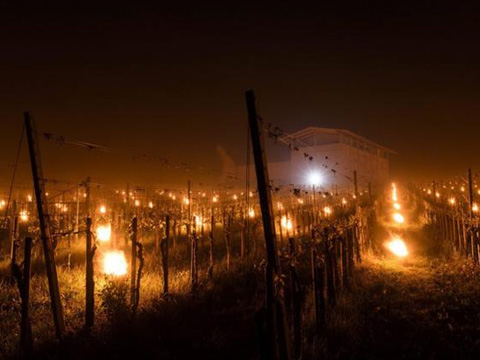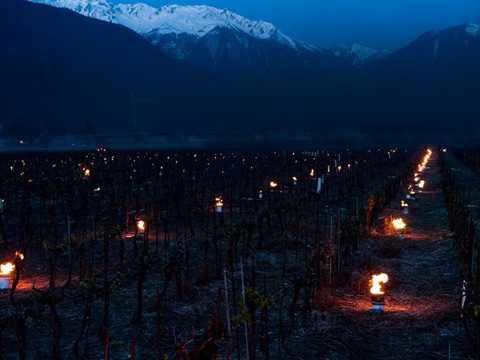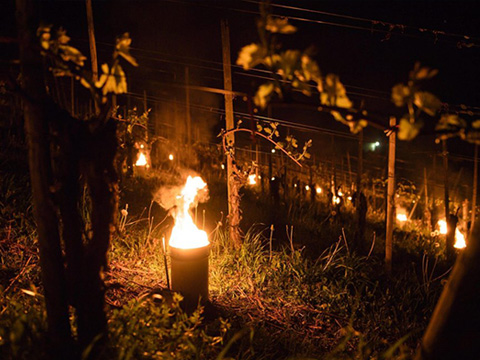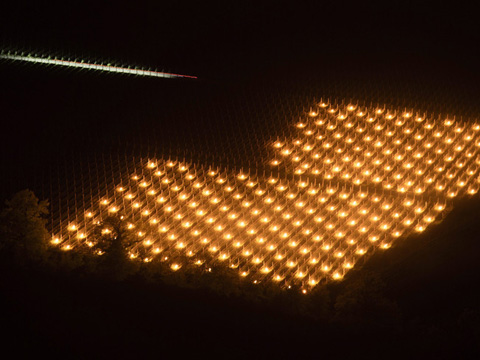Several methods of anti-freezing for fruit trees
Common fruit trees in the northwest include apples, pears, peaches, peach kernels, persimmons, cherries, apricots, and dates. The cold winter has caused great disadvantage to the wintering of these fruit trees. Many orchards have different degrees of freezing damage every year, which affects the yield, while the severe ones cause the production or dead trees in the coming year. Therefore, we must do a good job of wintering protection of fruit trees. The main measures are as follows:
1. Winter irrigation insulation. The heat capacity of water is higher than that of soil, and winter soil water can reach water to raise temperature and increase temperature to prevent freezing damage. Because the orchard is built on hillsides, hills and rivers, the soil layer is shallow and the water retention is poor. It is most likely to cause the fruit trees to suffer from dry and early freezing damage. Therefore, before the winter, the fruit trees should be irrigated 1-2 times and in the soil after irrigation. When the layer is slightly dry, the soil surface should be lightly cut to cut off the capillary tube and reduce the water loss and the accumulation of salt and alkali.
2. The soil cover grass. Covering the rows of fruit trees with wheat straw, hay grass, corn stalks, etc., it can block the cold wind from invading the rhizome, weaken the freezing damage, and reduce the evaporation of soil moisture, thereby maintaining the effect of warming and warming. When covering, cut the straw and other things into 17 cm long sections, cover them evenly and cover the soil layer to prevent the wind from blowing off. And after the cover rots, it can also become an organic fertilizer that is good for tree growth.
3. The earthen roots. The rhizome of fruit trees is the most difficult to withstand cold invasion, especially young trees, which are more susceptible to freezing damage. Therefore, it is necessary to combine the cultivating of the roots of the roots 10-20 cm before winter to prevent the roots from being damaged.
4. Cultivate the earth wall. In the cold regions and the severe cold years, the height of the northwest direction of the tree trunk is about 33-67 cm, and the half-moon-shaped earth wall with the length and width is used as a barrier to prevent wind and freeze, and prevent fruit trees. Frozen.
5. Dressing the grass. That is, before entering the winter, the straw or straw rope is wrapped around the trunk or the main branch, which can prevent the cold wind from invading and reduce the loss of water in the trunk. Before winding, it is best to soak the entangled material in lime water for 1-2 days to disinfect and prevent the pests from invading the fruit trees.
6. The trunk is painted white. After the fruit trees are picked, the whitening trunk and the main branches are uniformly whitened with a whitening agent to prevent freezing, sunburn, and killing of germs, eggs and adults hidden in the trunk.
7. Fumigation antifreeze. This method is suitable for cold nights. Using shredded firewood, crushed weeds, sawdust, clam shells, etc. as fuel, ignite at around 12 o'clock in the evening, and control the smoke to cover the space inside the orchard. Generally, 3-5 fire spots can be set per acre orchard. Set it on the upwind.
8. Film cover tree. The young shoots of the fruit trees are more susceptible to freezing. Before the big frost comes, the sticky (sewed) film is placed on the young trees, and the lower part is tied with a rope or buried in the root soil to prevent freezing. effect.
9. Plastic film covering. Generally, before entering the winter, the ordinary agricultural film is covered in a diameter of about 1 m around the trunk to achieve the purpose of water retention, heat preservation and antifreeze. When the temperature rises in the spring of the beginning of the year, the film should be collected in time, washed and dried for reuse.
10. Clear snow. In some places, the snow is heavy and the snow is easy to bend or break the branches. Branch bends and branches break the frostbite of the fruit trees. Therefore, after the heavy snow, the trunk should be shaken immediately, and the snow should be shaken to ensure the fruit trees survive the winter.
11. Increased application of winter fertilizer. If the fruit trees are not fertilized in autumn, they can be applied to winter fertilizer in October. It can nourish and strengthen trees and enhance the ability of fruit trees to resist cold. Winter fertilization should be based on decomposed and semi-fertilized farmyard manure, combined with the application of quick-acting fertilizers such as nitrogen, phosphorus and potassium, which can be applied by opening annular grooves or trenching.
12. Apply grass and ash. The color of the ash is dark, loose and porous, and is rich in potassium. Apply it shallowly to the orchard soil, that is, loose the soil, absorb heat and heat, reduce the freezing damage, and provide nutrients such as potassium, phosphorus, calcium and silicon for the fruit trees. Generally, 150-250 kg of wood ash per acre of orchard is applied, and 3-5 cm of soil can be applied to the soil, but the orchard with a saline-alkali soil and a pH value of >8 should not be applied.
13. Set vineyards antifrost candles for your fruit trees. We can produce and wholesale high quality vineyards antifrost candles for your fruit trees. They can burn more than 8 hours every night. If you are looking for a reliable anti-frost candles wholesaler, we are better for your choice.
We receive enquiries in English, Español (Spanish), Русский язык (Russian), Français (French) and العربية (Arabic). Our professional team will reply to you within one business day. Please feel FREE to contact us!

.jpg)




